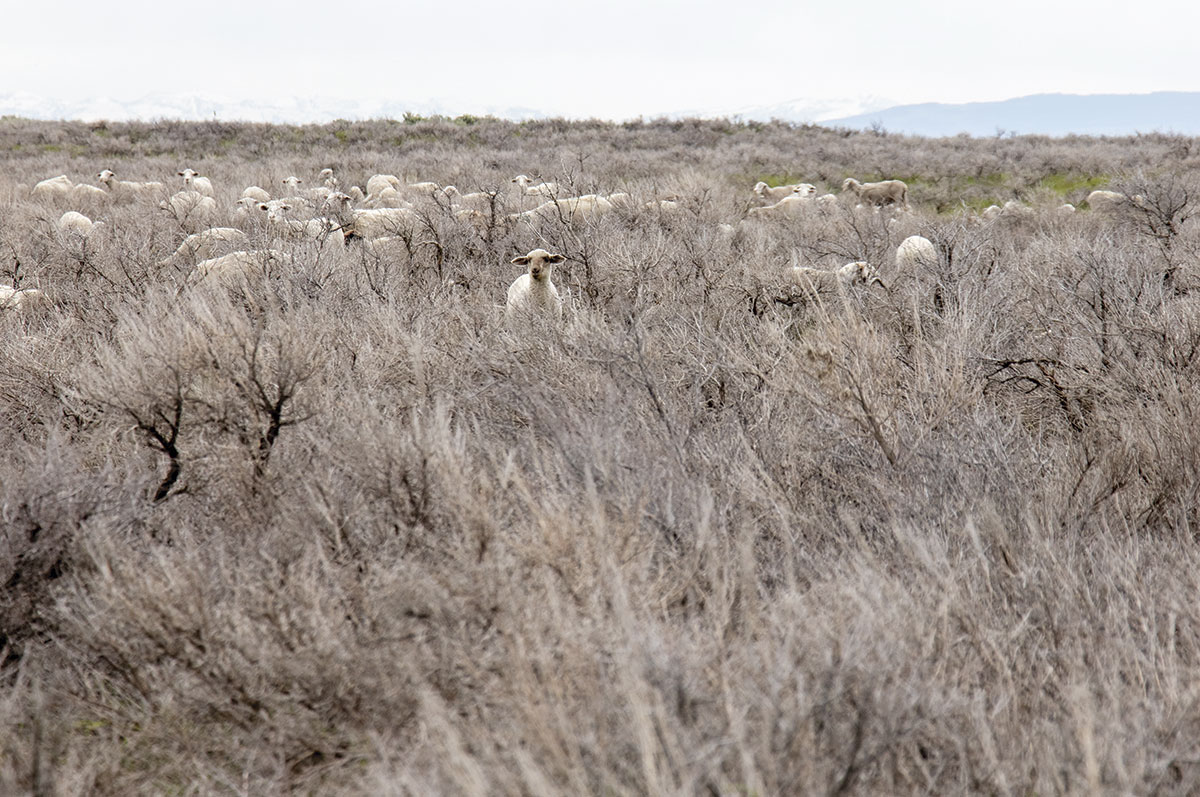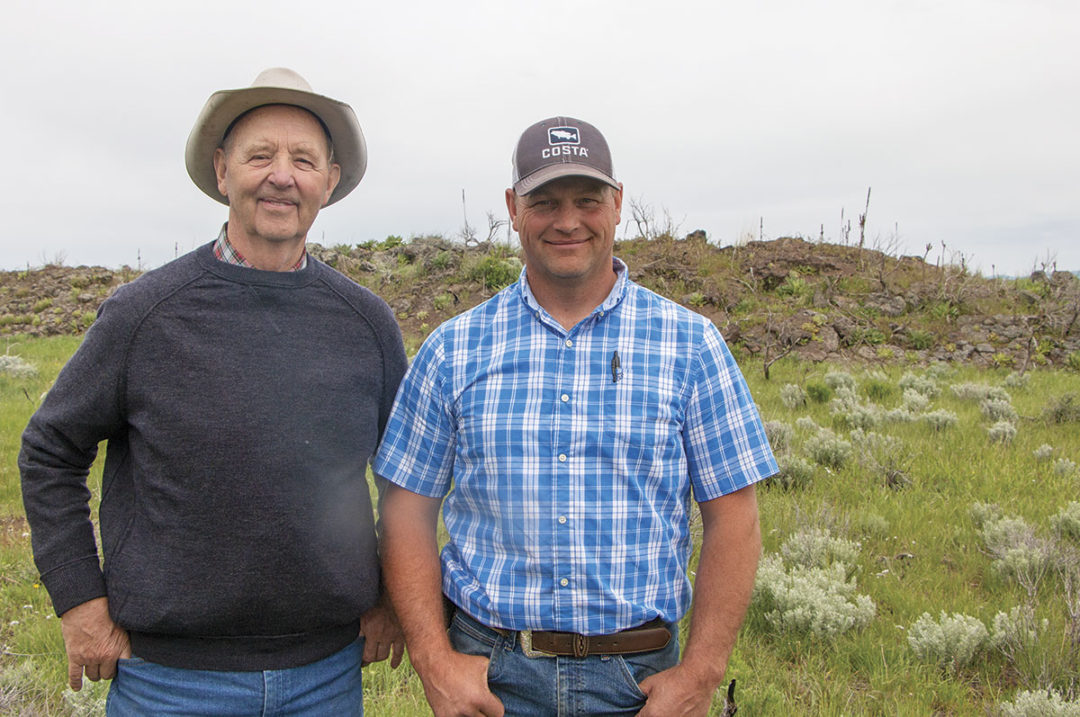Jeff and J.C. Siddoway have owned a sheep, elk and bison ranch near Saint Anthony, Idaho, for generations now, and they have tried almost every method of brush management there is. For Western producers, sagebrush is a curse. Some varieties, like Wyoming big sagebrush, can grow tall as a man and wide enough to reach its neighbor, forming a 6-foot canopy over the range. This shroud of brush can not only transform small sparks to full-blown wildfires, but it also camouflages predators, reduces acceptable forage for livestock and conceals strays. There is a part of every rancher that would be glad to see sagebrush eradicated from our landscape.
In the end though, most ranchers would eventually confess they do see some value in sagebrush (even if they admit it through gritted teeth). It provides habitat and food for a variety of wildlife, making it a vital part of healthy rangeland; however, a complete covering of sagebrush is not and never will be beneficial for any living thing. This means the sagebrush population must be managed in a responsible way to create a landscape where livestock and wildlife can thrive. Many options for sagebrush management are available – each with accompanying pros and cons – and the Siddoways have been experimenting to find which one is best for them.
Mechanical
One method the Siddoways have used is mechanical treatments. Anytime a tool is used to rip, drag or tear out brush, mechanical management methods are at work. This means it can be both the most efficient and least efficient depending on the method of choice. Using the old shovel might be a lot cheaper than buying a roller, but it’s also going to take a lot more time when clearing hundreds of acres of brush. When using mechanical methods, it is important to consider the type and size of land that will be treated.
When sagebrush prevented J.C. from using his snowmobiles in the elk pasture through the winter, he decided to create new pathways using rollers. This created perfect pathways for the snowmobiles. Now looking out on the landscape, it looks like the Siddoways have their own roads to use throughout the winter, but they are just simple strips of land J.C. cleared with a roller. The rollers were a great option for the Siddoways in this instance because they needed new pathways cleared, not a large pasture. While there are mechanical methods that will allow producers to clear hundreds of acres, it can take more time and money than other options. Choosing a specific type of mechanical management should never be a spur-of-the-moment decision.
Chemical
The Siddoways have also used chemicals to treat sagebrush. An herbicide is sprayed on brush, and after a year, only woody brush skeletons are left behind. The areas they have sprayed have seen an increase in forage quantity and quality, but the remaining skeletons mean it can still be difficult to see predators or wandering livestock. To completely remove the brush, some producers will go back a year after spraying and mow the area – a process that usually causes a lot of damage to mowers.

While chemical treatments are more economical than some mechanical methods, the cost can still add up. J.C. says it cost them around $20 per acre to spray one of their pastures recently, which became very expensive very quickly. In addition to the cost, chemical treatments kill every type of brush – even those that are desirable like bitterbrush. This means producers lose a major forage source that will most likely take the same amount of time to recover as the undesirable varieties, meaning that treatments will have to happen, once again killing off the wanted brush varieties. This treatment is typically expected to last around 20 years, but that is not necessarily the results the Siddoways have seen. In fact, Bret Taylor, research leader at the Range Sheep Production Efficiency Research site near Dubois, Idaho, has seen brush in the Sand Creek area (near Ashton, Idaho) that makes a full comeback in around 17 years, not the 40-50 years it takes sagebrush in other parts of the country.
Even if it takes only 20 years for the sagebrush to need treatment again, that means this treatment costs $1 per acre per year. In the grand scheme of things, that really is not a huge cost. But if the treatment is intended to completely clear the brush, mowers or rollers will have to be used in addition to the herbicide. Even though the grass grows up through the woody skeletons, livestock and wildlife are hesitant to put their heads through the scratchy woody skeletons to graze. And if your livestock are fond of certain brush varieties, spraying will eliminate a large portion of your forage.
Prescribed burning
Prescribed burning may be the most common brush management strategy historically and the one that the Siddoways have the most experience with. Always informing the right agencies and submitting the proper permits, the Siddoways have completed many prescribed burns on their rangeland. They tend to burn some portion of their rangeland every other year, maintaining a system so that their range stays in the best possible condition. “We’ve done burns in 2015, 2017 and 2021 in different parts of our range,” says J.C. “You can see the difference as you move through our land.” The difference between the land that has been burned and the land that has not been treated is substantial. Forage quality and visibility is much better, even in areas burned years ago.
Prescribed burning is often thought of as the least expensive option. This is true as long as nothing goes wrong. It is very important to be aware of federal, state and even county laws regarding prescribed burning. Permits need to be submitted and approved before starting a fire and the local fire department should be informed of the intent to burn. J.C. recommends selecting the right day to burn as well – not burning on windy days or days with low air quality.
Cooperative efforts
After the Grassy Ridge fire tore through thousands of acres near St. Anthony in 2018, many agencies decided it was time to take a more proactive approach to fire prevention. The Idaho Bureau of Land Management (BLM), Idaho Fish and Game, private producers and other organizations met together and established a two-part fire prevention and mitigation plan. The first part focuses on installing fuel breaks along roads. The second part focuses on treating 30,000 acres over a 10-year period. One-third of the treated land will be federal, one-third state and one-third private. Each of those groups (federal, state and private landowners) is tasked to decide what specific area will be treated each year, as only 1,000 acres per group can be treated per year.
Since each producer is representing themselves, they decide together whose land will be treated each year. This has led to some difficult conversations for producers. “We have to decide who has the greatest need for treatment each year,” says Jeff. “I might have a pasture that really needs treatment, but I might look across the fence and see that my neighbor does too. It becomes very difficult to be able to know who really needs it more. While we are grateful for the work the BLM has done so far, it just isn’t enough.”
When deciding which brush management strategy to use, it is important to research what treatment is best for each circumstance. Each treatment method will leave land unusable for some amount of time, so forage recovery time, price, intended land use and topography of the land all need to be considered. With correct land management strategies in place, maybe sagebrush will start to be less of a nuisance and become just another part of a healthy landscape.



.jpg?height=auto&t=1713304395&width=285)


